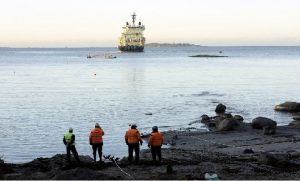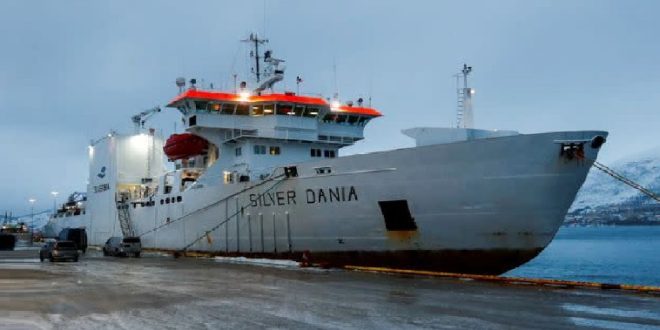02-02-2025
OSLO/ TURKU: A Norwegian cargo ship with an all-Russian crew suspected of damaging a Baltic Sea telecoms cable has been released by authorities in Norway after no link to the incident was found, the police said late on Friday.
The Silver Dania was seized at the request of Latvian authorities and with the help of Norway’s coast guard, police in the northern Norwegian city of Tromsoe said previously.
 “The investigation will continue, but we see no reason for the ship to remain in Tromsoe any longer. No findings have been made linking the ship to the act (of damaging the subsea cable),” the police said in a statement.
“The investigation will continue, but we see no reason for the ship to remain in Tromsoe any longer. No findings have been made linking the ship to the act (of damaging the subsea cable),” the police said in a statement.
The Silver Dania’s owner, the Silver Sea shipping group, denied that the vessel was involved in the incident, Norwegian broadcaster TV2 reported.
Sweden and Latvia are investigating the suspected sabotage on Sunday of the cable linking the two countries.
Swedish police seized and boarded the Maltese-flagged cargo ship Vezhen on suspicion it caused the damage.
The head of the Vezhen’s operator, a Bulgarian company, said on Monday it might have struck the cable with its anchor but denied any malicious intent.
Mats Ljungqvist, the prosecutor handling the investigation in Sweden, said on Friday that they had looked at the Norwegian ship, but dismissed its involvement.
The Baltic Sea region is on high alert after a string of power cable, telecom link, and gas pipeline outages since Russia invaded Ukraine in 2022.
The NATO military alliance recently boosted its presence with frigates, aircraft, and naval drones.
On Nov. 18, hours after two communication cables were severed in the Baltic Sea, 30 NATO vessels and 4,000 military staff took to the same body of water for one of northern Europe’s largest naval exercises.
The 12-day ‘Freezing Winds’ drill was part of a push to step up the transatlantic defence alliance’s protection of infrastructure in waters that carry 15% of global shipping traffic and are seen as increasingly vulnerable to attack.
 The Baltic Sea is bordered by eight NATO countries and Russia. There have been at least three incidents of possible sabotage to the 40-odd telecommunication cables and critical gas pipelines that run along its relatively shallow seabed since 2022, when Russia invaded Ukraine.
The Baltic Sea is bordered by eight NATO countries and Russia. There have been at least three incidents of possible sabotage to the 40-odd telecommunication cables and critical gas pipelines that run along its relatively shallow seabed since 2022, when Russia invaded Ukraine.
“NATO is stepping up patrols…..allies are investing in innovative technologies that can help better secure these assets,” said Commander Arlo Abrahamson, a spokesperson for NATO’s Allied Maritime Command.
Yet the ease with which a ship’s anchor can slice through a cable, coupled with the often-treacherous sea conditions, makes actual prevention of such attacks almost impossible.
On day three of the exercise, Beata Król, German commander of the multinational task group, and the crew of her de-mining vessel, the Weilheim, tried to launch an underwater drone to inspect the seabed as a winter storm raged.
After a 30-minute delay in launching it, the drone had frozen and could not operate.
“The batteries got cold,” she said, shrugging, as she waited for the equipment to warm up.
Having spent years detonating World War Two-era mines on the Baltic seabed, NATO is repurposing its six-vessel minehunting fleet to also monitor suspicious underwater activity, with its hull-mounted sonar scanning the seabed, drones able to take pictures and video under the water, and specialist divers on hand but its powers are still limited. (Int’l News Desk)
 Pressmediaofindia
Pressmediaofindia




